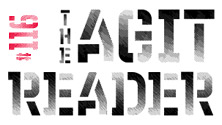
A Wilderness of Noise
by Kevin J. Elliott
Right from the start, Calgary, Alberta’s Women were surprisingly difficult to decipher. The easy way out was to associate them with the, then (in 2007) burgeoning, wave of lo-fi basement-gazers (Deerhunter, Times New Viking, Eat Skull) simply for the lean towards obfuscated pop melodies. As a whole, though, their debut record was more glorious mess, a grotesque blend of drone and found sound, of industrial collapse and rural spook. Any adversity to studied discordance may have made you disown them, any want for chaos without form or function, and their songs might have been too soft. In the end, though, Women found a middle ground.
That fence-balancing act between extremes is even more profound on Public Strain, the band’s new album. If one had to choose, this, their sophomore effort, might place them slightly on the side of stubborn experiment. It plays like This Heat sent on an Outward Bound mission—four heads equipped with plenty of artificial klang and steadfast in making as much noise as possible, but forced by the elements to produce a unified front to get them out of that dense dark forest. It could be attributed to geography, as only a band isolated the upper reaches of Canada could make such a strange mélange while free to write unencumbered or influenced. But as guitarist and vocalist Patrick Flegel explains, it was more a geography of mood. After re-examining Public Strain, that makes perfect sense. Women are a prime example of four divergent minds seeing what happens when they all continually clash in the same room. I recently had the chance to discuss the formula for such a beautiful disaster with Flegel, a few weeks before the release of Public Strain.
I think the consensus is that your first record was extremely polarizing when people first heard it. When you went in to record Public Strain, did you guys consciously try to gauge which extremes listeners liked more before laying them to tape?
Patrick Flegel: Absolutely not. It’s strange because half the time I’m listening to pretty discordant music, and the other half I’m listening to actual songs. And what comes out with the writing... I don’t really know how it happens. I guess it just really depends on what kind of day it is or who’s there. I see what people write and what people say to us who have nothing to do with the writing process, and all of that has nothing to do with us.
Well, I do think that on this record particularly, you do take things further into those extremes. The beautiful parts are now gorgeous, and the ugly stuff is rather gnarly. When you come together to write, is there a preference? I guess what I’m asking is how you meet in the middle?
PF: People always say that about us, but I don’t see the difference. People think of it as this shocking thing. I listen to a lot of music and I don’t think that what we do is all that shocking.
I guess that shock comes from a song like “Venice Lockjaw.” It has such a strong melody throughout, and it has none of the discordance you would normally have underneath your other songs. So how do you decide that this song should have nothing more added to it?
PF: Okay, I understand the question. If we have a skeleton of a song and we choose to push it in a certain direction, what makes us push songs in certain directions? “Venice Lockjaw” I wrote and recorded alone. There was no one in the house so it came out very hushed. I’m not typically in that situation. Usually when we’re all together, we like to blast. The quieter songs are usually just me, and I tend to fill that empty space more with a vocal melody rather than noise.
What I do hear for certain is a push to use more drone in the cradling of songs. If there’s something that gives a balance to those extremes, it has to be the drone. Were there any particular artists or records you were listening to that bled into these recordings?
PF: I think that the thing I can relate to with John Cale, as a producer, especially on Nico’s Marble Index or the Stooges record, are those one-note drones and the shifting of chords. I love the sound of out-of-tune notes going in and out of sync.
You’ve toured a lot in the last two years. I’m wondering if this record was more informed by the spontaneity of playing live.
PF: The last song, “Eyesore,” is extremely old, but we’ve been playing it live since the beginning, so it is definitely at a different place after playing it live so much. Actually though, after touring constantly, it came to a grinding halt, and we all came home and had to get jobs. When we got back together to record, there was this complete lack of consistency. It was all different configurations.
